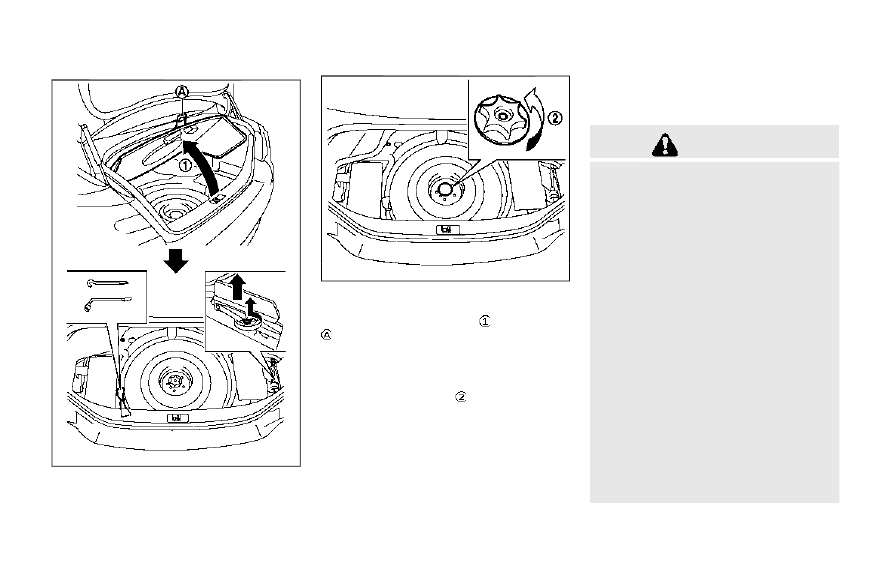Infiniti Q70 Hybrid (2018 year). Manual - part 27

JVE0356X
SCE0882
Getting the spare tire and tools
Raise the trunk floor cover
using the tab
.
Remove jacking tools located inside the
trunk as illustrated.
The spare tire is located under the trunk
room. Remove the cap
holding the spare
tire.
Jacking up the vehicle and removing
the damaged tire
WARNING
. Never get under the vehicle while it is
supported only by the jack. If it is
necessary to work under the vehicle,
support it with safety stands.
. Use only the jack provided with your
vehicle to lift the vehicle. Do not use
the jack provided with your vehicle on
other vehicles. The jack is designed
for lifting only your vehicle during a
tire change.
. Use the correct jack-up points. Never
use any other part of the vehicle for
jack support.
. Never jack up the vehicle more than
necessary.
. Never use blocks on or under the jack.
. Do not start or run the INFINITI
Direct Response Hybrid
®
System
while vehicle is on the jack, as it may
cause the vehicle to move. This is
especially true for vehicles with lim-
ited slip differentials.
. Do not allow passengers to stay in
In case of emergency
6-5